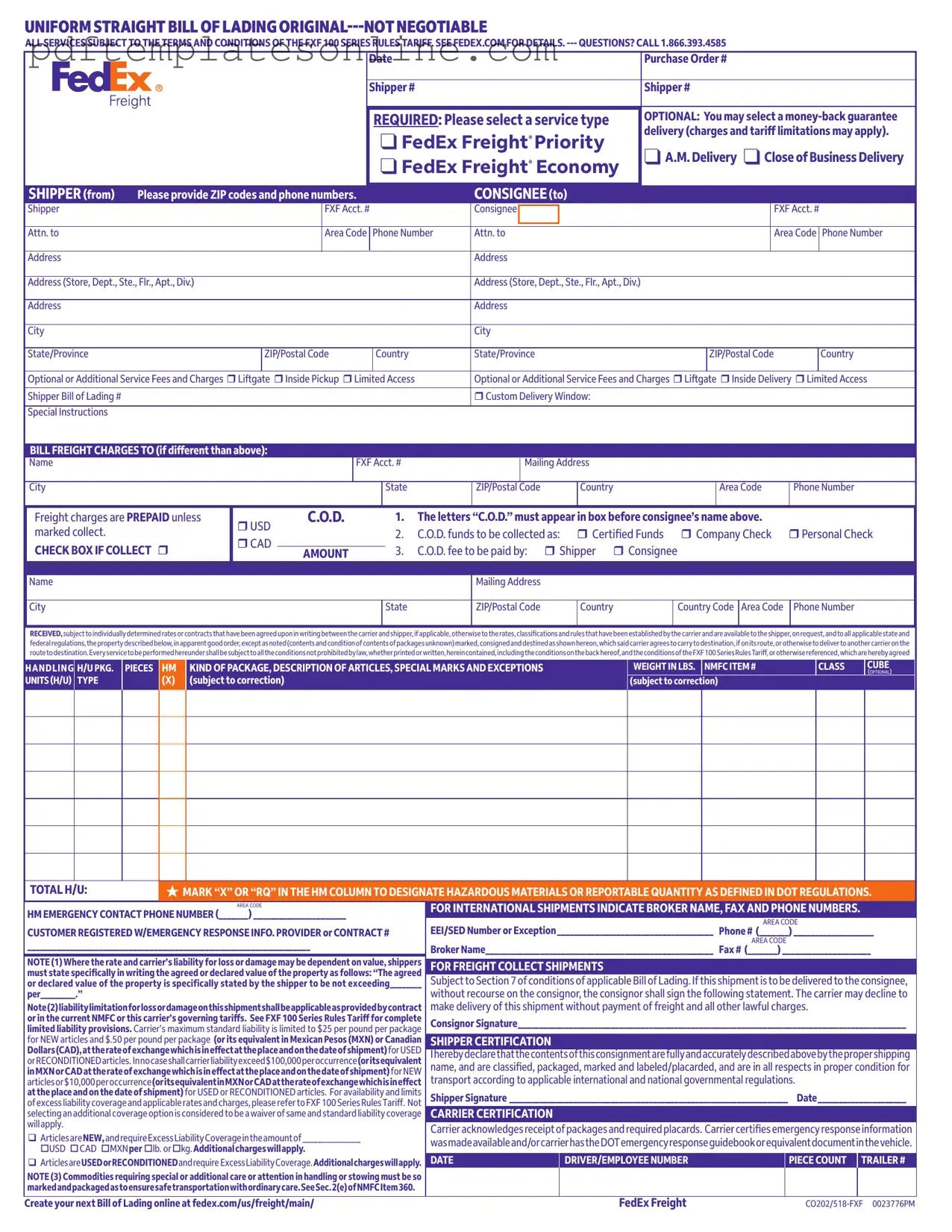Filling out the FedEx Bill of Lading form can be straightforward, but several common mistakes can lead to delays or issues with shipping. Understanding these pitfalls can help ensure a smoother process.
One frequent error is neglecting to include complete contact information for both the shipper and consignee. It is essential to provide accurate names, addresses, and phone numbers. Missing or incorrect information can lead to delivery failures or miscommunication. Always double-check these details before submitting the form.
Another common mistake involves selecting the wrong service type. The form requires the shipper to choose a specific service, such as FedEx Freight Priority or Economy. Selecting an inappropriate service can result in unexpected charges or delays. Review the options carefully to ensure the chosen service aligns with your shipping needs.
Additionally, many people overlook the requirement for a declared value for freight collect shipments. The form specifies that shippers must state the agreed or declared value of the property. Failing to do so can limit the carrier's liability in case of loss or damage. It is crucial to include this information accurately to protect your shipment.
Another mistake involves not marking hazardous materials correctly. If the shipment contains hazardous materials, it is necessary to mark the appropriate column on the form. Ignoring this requirement can lead to serious legal repercussions and delays in transportation. Always ensure compliance with regulations regarding hazardous materials.
Some shippers also forget to indicate optional services, such as liftgate or inside delivery. These services can significantly impact the shipping process. If needed, be sure to check the corresponding boxes to avoid complications later on.
Lastly, many individuals fail to read the terms and conditions outlined in the FXF 100 Series Rules Tariff. Understanding these terms is vital, as they govern the shipment's liability and other critical aspects. Familiarizing yourself with these conditions can prevent misunderstandings and ensure compliance.
By being aware of these common mistakes and taking the necessary precautions, shippers can help ensure their shipments are processed smoothly and efficiently. Attention to detail is key when filling out the FedEx Bill of Lading form.
